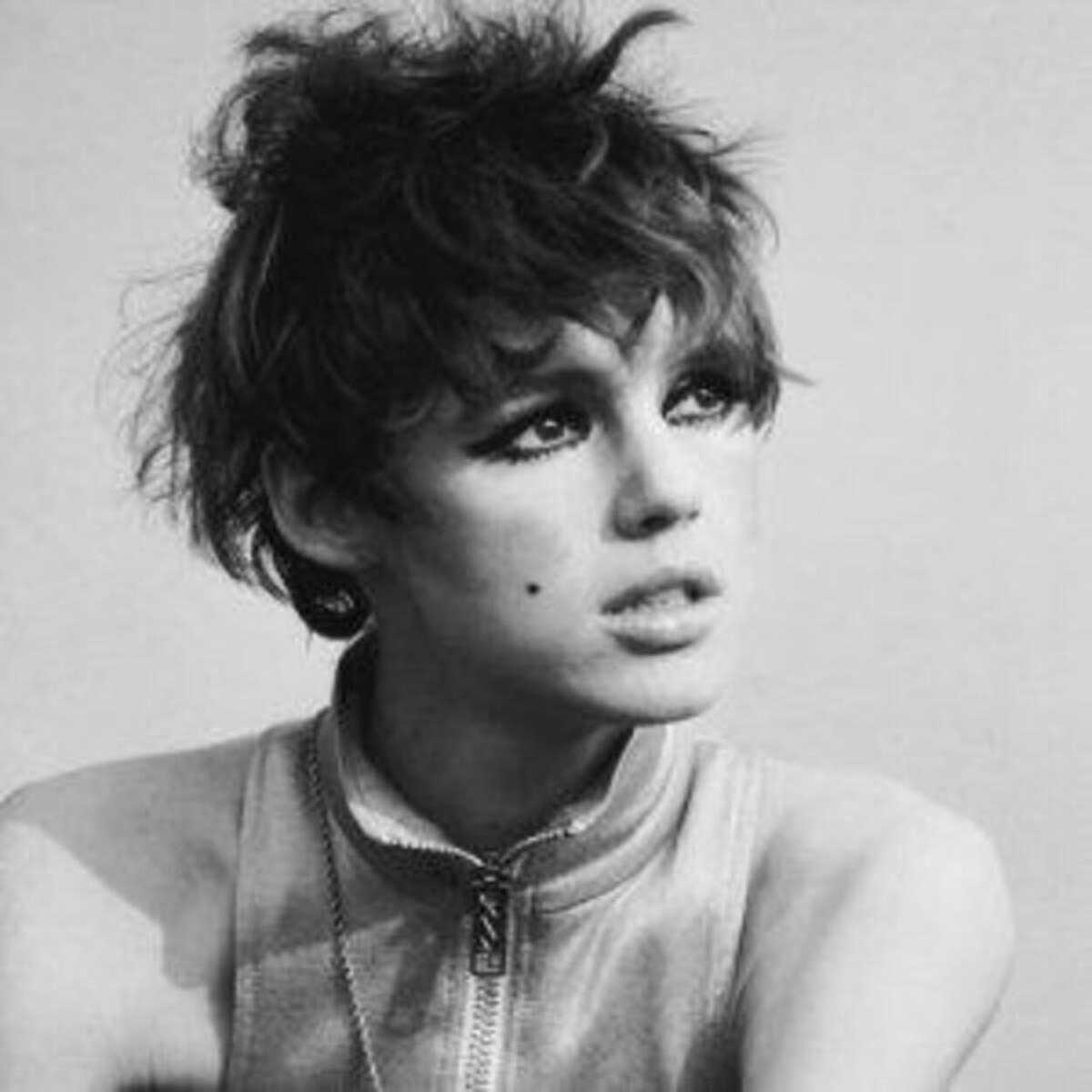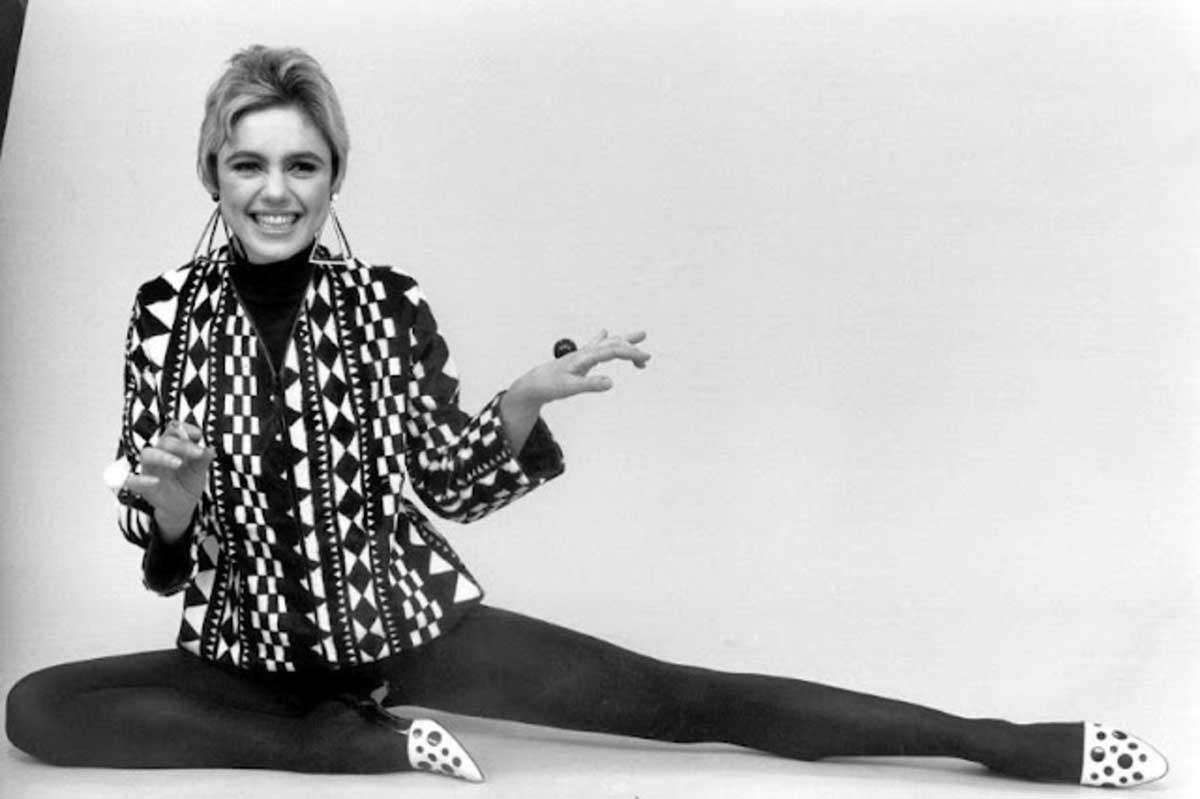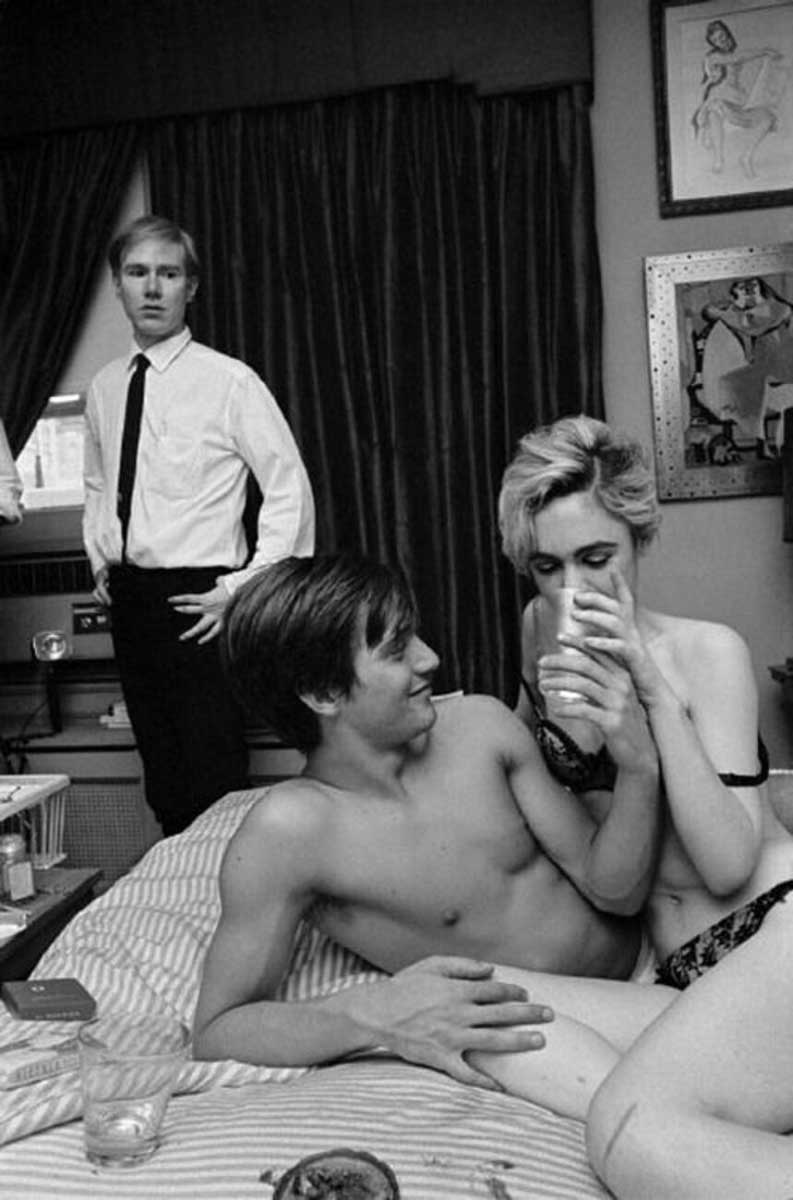
Edie Sedgwick (née Edith Minturn Sedgwick, 1943-1971) was brought up by rich, upper-class parents in Santa Barbara, California. Her childhood was marked by solitude, instability, and severe social constraints. She had become an introvert by the time she was thirteen. She also had a life-long battle with bulimia and anorexia. Sedgwick’s tough-partying and glamorous lifestyle led her to cross paths with Andy Warhol in New York in 1963. During the heyday of the Pop Art movement, she emerged as his muse and his superstar. Before her untimely death in 1971, she appeared in numerous films of Warhol’s.
Edie Sedgwick: Wealth and Mental Illness

Edie Sedgwick was the seventh of eight children, born in California to Alice Delano de Forest and Francis Minturn Sedgwick, a cattle rancher and artist. Francis was part of the centuries-old Sedgwick family that originated from Massachusetts. Despite her family’s riches and prominence in society, Edie’s childhood was difficult.
The Sedgwick children grew up on their family’s properties in California. Their daily affairs were rigorously regulated by their parents, who initially homeschooled them and hired nannies to tend to them. They were mostly separated from the world around them, and they were taught that they stood higher than the majority of those around them. Edie began having eating disorders during her adolescence. She started boarding school at the Branson School, in San Francisco when she was thirteen. It wasn’t long before she was removed from school since her eating issue was becoming more acute. Because of this, her father drastically limited her autonomy.
In a particular instance, she happened to walk in on her father having intercourse with one of his lovers. She was taken aback, but he insisted she had dreamt it, struck her, and summoned a doctor to give her tranquilizers. Edie disclosed to the world, as an adult, that he had tried to sexually abuse her multiple times since she was seven years old.

Get the latest articles delivered to your inbox
Sign up to our Free Weekly Newsletter
Due to the official diagnosis of anorexia, Edie was removed from school for good in 1958. She was later admitted to the prestigious Silver Hill mental facility in Connecticut in 1962, at her father’s demand. She was then taken to Bloomingdale, New York, whereupon her anorexia significantly improved. She was discharged from the hospital, had a brief romantic connection with an undergraduate at Harvard, ended up pregnant, and sought out an abortion.
Edie traveled to Cambridge, Massachusetts, in 1963 to study sculpting. Throughout this time, she mingled with leaders of the Harvard social scene’s exclusive bohemian periphery. Soon after that, Edie’s two elder brothers died within eighteen months of one another. The eldest, Robert, was killed in a motorbike accident. Francis, the one who had the most difficult relationship with their father, committed suicide. Edie was devastated to the point of no return. Sedgwick became angrier than she had ever been. All of this made her hate her father even more than before. This was the final blow that determined Edie’s course of action: fending for herself alone and as far apart from her father as she possibly could.
New York and The Factory: Becoming a Superstar

In 1964, Sedgwick inherited a small fortune from her grandmother’s estate on her 21st birthday, allowing her full financial freedom. She moved to New York City to start a modeling career. Here, Sedgwick came across Andy Warhol during a gathering at Lester Persky’s flat in March 1965. This encounter sparked a reciprocal attraction, with Edie often navigating Warhol’s art studio in Midtown Manhattan called The Factory.
In 1965, Warhol was shooting Vinyl. Despite Vinyl’s male-only ensemble, Warhol cast Sedgwick in the film as a spur-of-the-moment decision. She also made a brief cameo in a different Warhol film, Horse, around the same time. Sedgwick’s parts were short, but she piqued Warhol’s curiosity enough for him to give her the lead parts in his other films.
Poor Little Rich Girl (1965), a ground-breaking avant-garde film, was envisioned as a part of The Little Rich Girl Saga, a trilogy of films all starring Sedgwick. Avant-garde films are known for being unusual and plotless. The audience is usually perplexed after seeing them. The majority of these films are dramatic, with excellent photography involved. Poor Little Rich Girl started shooting in Edie Sedgwick’s flat in March 1965. It showed her carrying out her usual activities. Kitchen was Edie’s third film shot by Warhol. The film depicts Edie reclining on a bed in her undergarments alongside Gino Piserchio while being harassed off-camera by Chuck Wein.

Warhol’s films had been primarily exhibited at alternative cinema theatres and The Factory. They had little revenue. Nevertheless, Sedgwick started to garner close attention from the popular press, which acknowledged her film presence as well as her unique fashion sense. During this time, she established a unique look of her own.
With her tight-fitted jumpsuits, tiny skirts, huge pendant earrings and matching necklaces, and intense makeup, Sedgwick was, without question, one of the greatest underground-style fashion icons. Her magnetic appearance had such an influence on the social and cultural climate of her period, that her distinct aesthetic has only grown more popular over time. Women’s Wear Daily called Edie one of the biggest and most significant fashion rebels in New York.
Edie also chopped her natural brunette locks short and spray-painted them in a silvery shade to resemble Warhol’s appearance. Warhol nicknamed Sedgwick his Superstar and the two started attending different events together. Sedgwick’s fashion style continues to influence designers today, including household names like John Galliano, who saw her as the main inspiration for his 2005 Dior collection.

All through 1965, the couple collaborated on two films: Lupe and Chelsea Girls. Sedgwick and Warhol’s relationship soured near the end of 1965 when Sedgwick allegedly requested that Warhol cease showing the films she was in. Although Lupe is widely regarded as Sedgwick’s final Warhol film, she was also in The Andy Warhol Story with Rene Ricard in November 1966.
Pop Art and Platonic Love

A spiritual or psychological relationship that exists between a male and a female, devoid of sexual actions, is referred to as platonic, after Plato‘s concept of non-sexual affection and attachment. Platonic connection is philosophical and profound in nature, with no carnal closeness. It entails truthfulness, commitment, and a profound bond. Keeping this in mind, Edie Sedgwick and Andy Warhol had one of the most prominent 1960s romantic tales. Even though silver was their defining hue, Edie and Andy became Pop Art’s platinum pair.

Even though Edie was straight and Andy was homosexual, they were drawn to one other magnetically, in the context of platonic love. Andy, for one, was captivated by her to such an extent that he transferred himself into her. Warhol had always been uncertain of himself growing up. He had a low sense of self-worth, never satisfied with the things he saw in the mirror. Edie, on the other hand, tempted him by portraying herself as an exact duplicate of him. She sported her hair like his and wore Beatnik striped outfits just like Warhol. Warhol’s perception of this may be said to be a narcissistic quality that he wasn’t able to overcome, in the sense that via Edie he was able to see and retain an elevated perception of his identity. If he could love Edie, by extension, he could love himself.

Before Warhol observed his identity through Sedgwick, he recognized something of Marilyn Monroe in her.
Andy was impressed by the visual similarities between Monroe and Sedgwick. Monroe was his biggest inspiration and Edie reminded him of her, especially with her effusive grin, penetrating eyes, and glowing, pale complexion. Edie also painted a mole on the side of her face just as Marilyn did.
There was also an underlying psychological and emotional similarity. Edie had the same combination of inexperience and savvy as Marilyn. There was also a need to be approved and to impress others, as well as wanting to fend for herself and succeed through her own work. Warhol considered Sedgwick to be the most tormented individual he had ever encountered. He felt she was beautiful, yet there was something sickly about her that drew him in. In truth, it was Edie’s attractiveness, as much as her apparent illness, that piqued Andy’s curiosity.

All of these observations were strikingly reminiscent of what Warhol saw in Marilyn Monroe. Marilyn and Edie possessed a natural capacity to generate some sort of reaction from others. One may argue that Edie Sedgwick was a spin on the Marilyn concept, the Monroe for the new generation of the time.
Muse, Socialite, or Superstar

Many people think of Edie Sedgwick as an elite society heiress who consumed a lot of drugs. But Edie was also a muse to Andy Warhol and, later, Bob Dylan. She was a wild celebrity who epitomized the Sixties’ style and extravagance. When Warhol and Edie first became acquainted, they had no clue that their meeting would lead to one of the most renowned, contentious, and inventive collaborations of the post-war period.
Sedgwick’s tale is inextricably related to Andy Warhol’s. Their relationship was widely publicized, but it was fleeting. They had been acquainted with one another for a little over a year, yet Edie is still one of Warhol’s most esteemed superstars. Together, they embodied the era’s desires and philosophies.

Back in the 1960s, the fashionista figure of Edie Sedgwick began to assemble a group of acquaintances around her. She frequented the Ritz in Boston, wherein she would perform Richard Rodgers’ Loads of Love to her little group of newfound friends. Despite her abundant wealth, affection and attention seemed to be in limited supply throughout her life.
To make up for the absence of both, she searched for a viewership whenever she went. She loved that other individuals acknowledged her when she entered a room. In fact, they allowed her to be the life of the party, the center of attention. She desired to create a persona that was almost mythical in its extremeness and her engagement in the artistic shenanigans at Warhol’s Factory paved the way for the life she desired.

Edie appeared in a Vogue magazine photoshoot, where she was branded a youthquaker. She was nearly swamped by undergraduates yelling her name at Warhol’s exhibition at the Institute of Contemporary Art in Philadelphia in October 1965. Unfortunately, Edie quickly became addicted to some of the most powerful drugs accessible in the celebrity circles she was navigating. After meeting and falling in love with Bob Dylan in 1966, Edie informed Andy that she had agreed to a contract with Dylan’s agent. Subsequently, Sedgwick relocated to the Chelsea Hotel in October of that year and ended up in a fleeting romance with Dylan’s colleague, artist Bob Neuwirth. She got addicted to sedatives during this period. Neuwirth ended their romantic attachment in early 1967, struggling to deal with Sedgwick’s drug usage and unstable attitude.
In March of 1967, Edie Sedgwick started what appeared to be a promising period for her professional life, but it was indeed the start of her long and last collapse. Ciao! Manhattan, a quasi-autobiographical alternative film produced by John Palmer and David Weisman, was being shot, and it was meant to give the ultimate push to Edie’s ascension to the Hollywood limelight.
Edie Sedgwick: Final Decline

During the filming of Ciao! Manhattan, Sedgwick accidentally set fire to her room in the Chelsea Hotel and was temporarily hospitalized with injuries. The film was halted due to her rapidly deteriorating health because of drug usage. Sedgwick went to her family home in California to recover after being hospitalized for drug usage and psychiatric disorders. After being taken into custody for drug-related charges, she was sent to the Santa Barbara Cottage Hospital’s mental department in August 1969. Sedgwick befriended a patient called Michael Brett Post, while in the hospital. They got married in July 1971.
Sedgwick’s relationship with Post provided her with access to pain medicines given to him, so she relapsed. She went to a fashion exhibition at the Santa Barbara Museum on November 15, 1971, after which she went to a party and got intoxicated. She called her spouse to come and get her. On the drive home, Sedgwick revealed concerns about their relationship. Post handed Sedgwick the medicine that she had been administered before they both went to sleep. As stated by Post, Sedgwick began to fall asleep rapidly and started breathing in an unusual way. Post ascribed these signs to her excessive smoking. When Post woke up the next morning, he saw Edie’s lifeless body next to him. The coroner deemed her death uncertain, however, there were notes pointing to either negligence or suicide. Sedgwick was buried in the modest Oak Hill burial in Ballard, California, rather than in her family’s burial site.

Edie Sedgwick’s accomplishments may look minimal to others. A few magazine fashion covers, a slew of appearances in Warhol’s alternative films, and an incredible flair for clubbing and drug consumption. To disregard Sedgwick in this manner, however, is to neglect the highly contemporary concept that she built her life as if it were a work of performing art. She became the very embodiment of art. Another indication of her impact is found in the number of films about her, notably, Factory Girl, starring Sienna Miller. There are also many books written about her.








